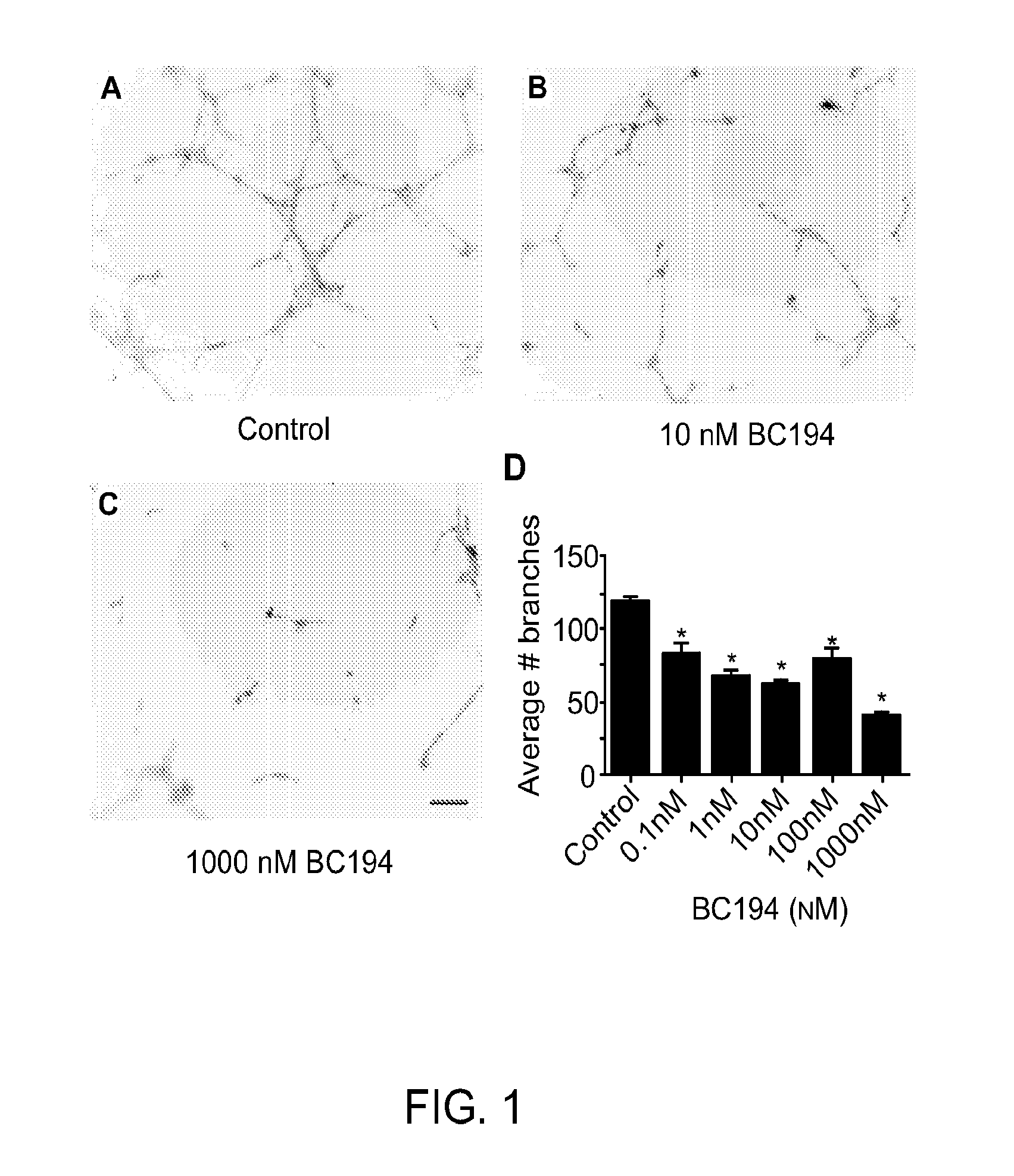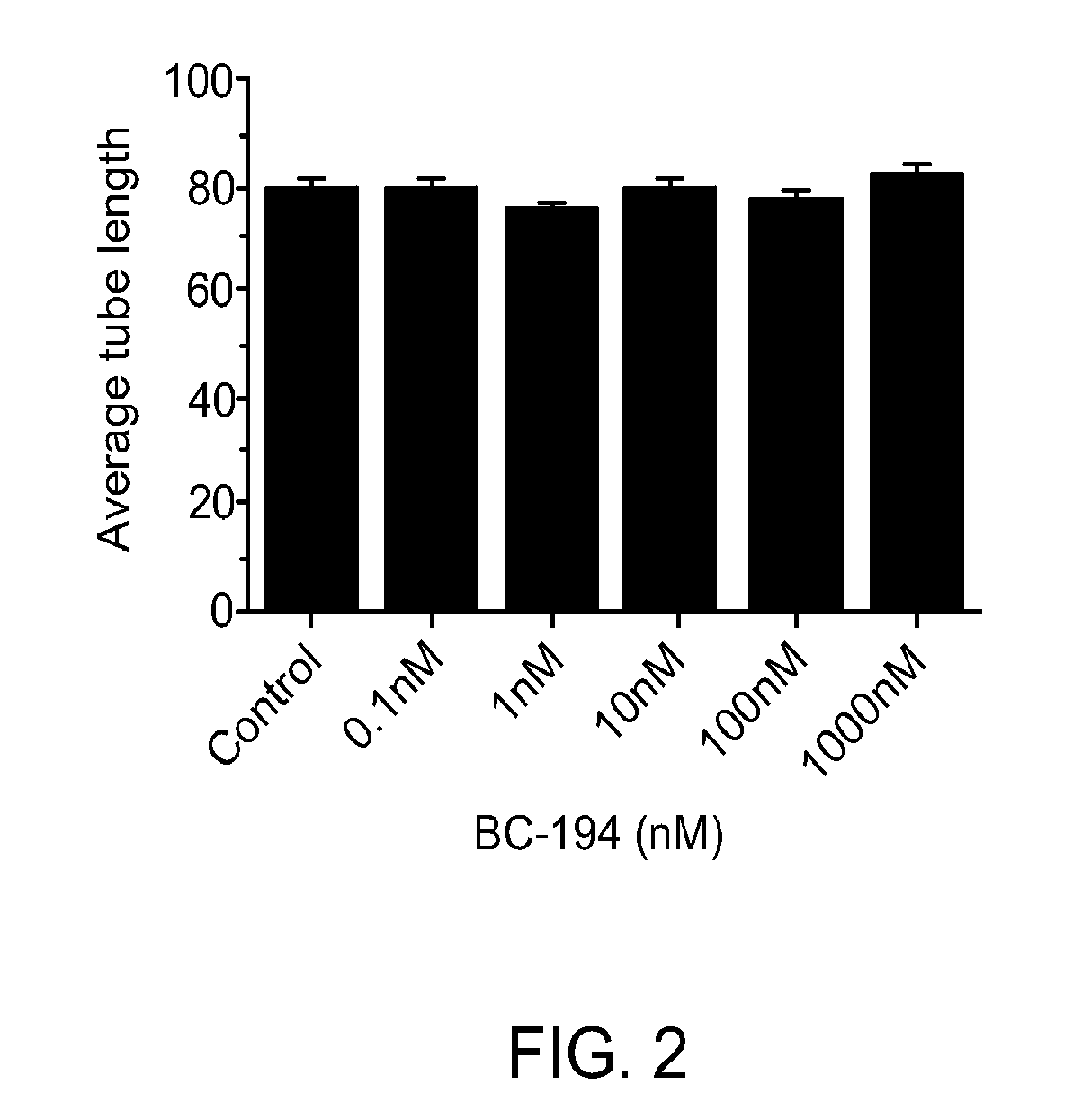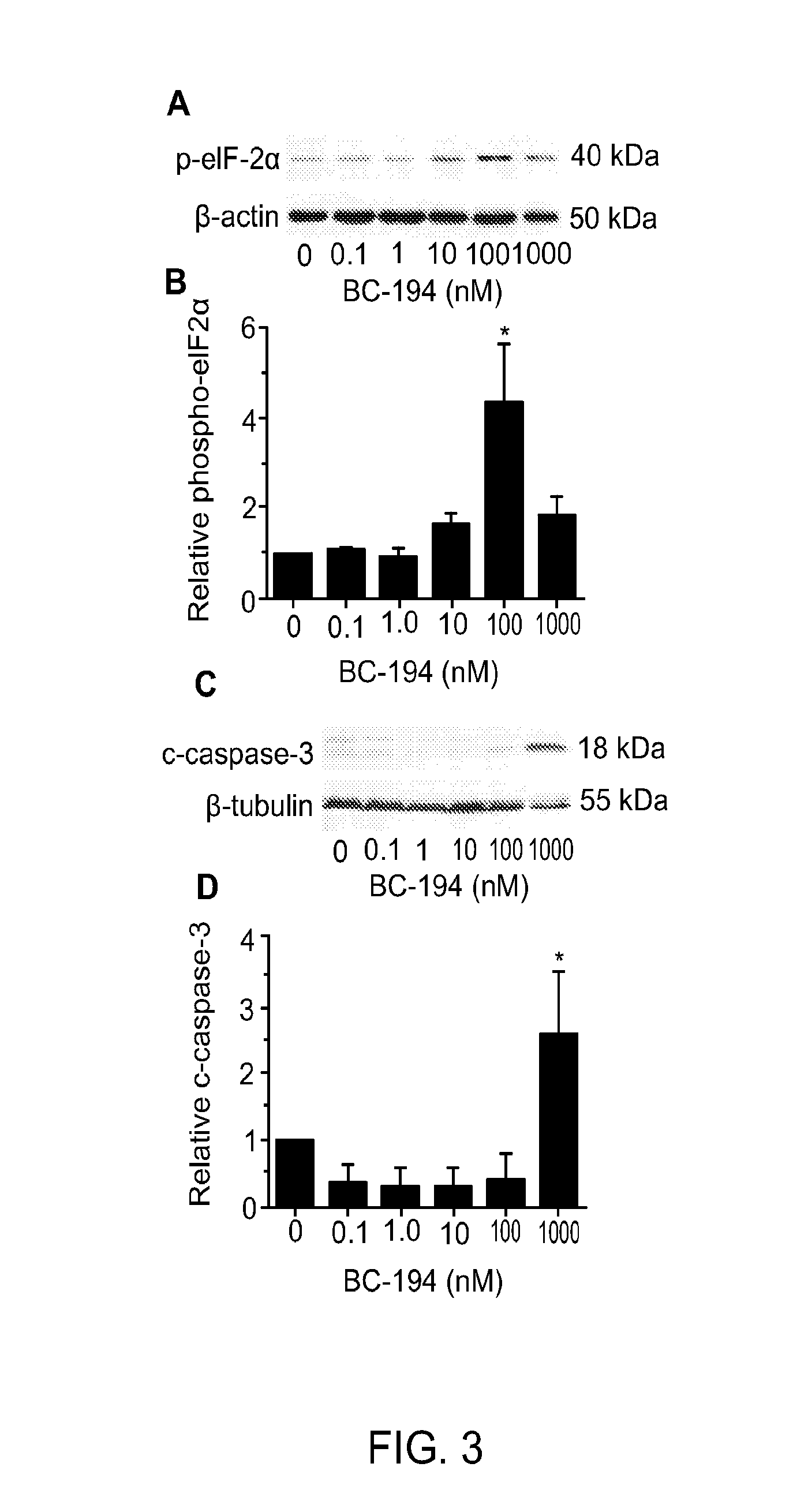METHODS AND COMPOUNDS FOR DIAGNOSING THREONYL-tRNA SYNTHETASE-ASSOCIATED DISEASES AND CONDITIONS
a technology of threonyltrna synthetase and tars, which is applied in the field of methods and compounds for diagnosing diseases and conditions associated with altered tars activity, can solve the problems of limiting approaches, lack of understanding of complex pathways and interactive regulatory events, and complex processes involved in the initiation, regulation and modulation of protein synthesis in angiogenesis, so as to reduce the level of tars molecule, the effect of increasing the metastatic potential of cancer
- Summary
- Abstract
- Description
- Claims
- Application Information
AI Technical Summary
Benefits of technology
Problems solved by technology
Method used
Image
Examples
example 1
Results for Example 1
Concentration-Dependent Effects of a TARS Inhibitor Reveal a Specific Angiogenic Function for TARS
[0159]Inhibition of TARS by BC194 has been shown previously to reduce in vitro endothelial tube formation (Wilkinson, Gregory et al. 2006); however, because TARS is a component of the protein synthesis machinery, this effect could be explained by cell toxicity through the unfolded protein response or apoptosis pathways. By using a range of BC194 concentrations, the sensitivity of HUVECs to the anti-angiogenic versus cell stress effects of BC194 was compared. As shown in FIG. 1, the number of branches formed by endothelial cells in a tube formation assay was sensitive to subnanomolar concentrations of BC194, although tube length was unaffected (FIG. 2). The concentration of BC194 required to affect tube formation was 100-fold lower than that required to detect the unfolded protein response (phospho-eIF2α) and apoptosis (cleaved caspase-3) (FIG. 3). Effects on cell vi...
example 2
Database Assessment of TARS in Disease
[0165]Database analysis was used to assess TARS expression in cancers including Cancer Gene Anatomy Project (CGAP) (Strausberg 2001), GEO database, and Human Protein Atlas (Uhlen, Oksvold et al.). Using the CGAP database, TARS mRNA was found to be over-expressed in cells derived from prostate carcinoma, colon adenocarcinoma, ovarian carcinoma, and in certain stem cell lines. Furthermore, whereas other synthetases were found to be relatively unchanged, TARS protein was found to be selectively upregulated in ovarian tumors from tissue arrays displayed in the Human Protein Atlas. (www.proteinatlas.org / ENSG00000113407).
[0166]A preliminary investigation using GEO data from a prostate cancer progression study by Tomlins et al. (Tomlins, Mehra et al. 2007) revealed that mRNA levels of TARS exhibited a 2.9 fold increase in prostate carcinoma versus normal (p<0.0001). To expand on these findings, GEO dataset GSE6919, 171 sample CEL files (scanned chip im...
example 3
Results for Example 3
Immunohistochemical Analysis of TARS Expression in Prostatectomy Sections
[0174]To assess the relationship between TARS expression and prostate cancer progression, patient tumor samples were analyzed by immunohistochemistry and scored by intensity as shown in FIG. 13A. Statistical analysis of the data concluded that TARS protein levels are increased in tumors with Gleason score of 3 and above (FIG. 13B). In addition, a post-analysis of the TARS intensity found a significant increase in expression during progression from Gleason score 3-4 with a mean difference of 0.304, and a p-value of 0.0001.
[0175]TARS expression was also compared with 10-year outcome. When TARS staining of the various anatomical grades was examined, there was a strong relationship between Gleason 5 staining and elevated PSA at 10-years. Specifically, a one unit increase in TARS staining on the Gleason 5 portion of the slide increases the odds by a factor of 2.211 that subject will experience b...
PUM
| Property | Measurement | Unit |
|---|---|---|
| Level | aaaaa | aaaaa |
Abstract
Description
Claims
Application Information
 Login to View More
Login to View More - R&D
- Intellectual Property
- Life Sciences
- Materials
- Tech Scout
- Unparalleled Data Quality
- Higher Quality Content
- 60% Fewer Hallucinations
Browse by: Latest US Patents, China's latest patents, Technical Efficacy Thesaurus, Application Domain, Technology Topic, Popular Technical Reports.
© 2025 PatSnap. All rights reserved.Legal|Privacy policy|Modern Slavery Act Transparency Statement|Sitemap|About US| Contact US: help@patsnap.com



